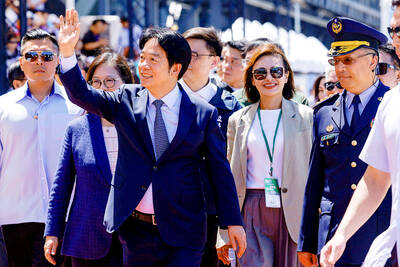The Remasculinization of South Korean Cinema derives its title from a book published in 1989 by Susan Jeffords called The Remasculinization of American Culture. This argued that Hollywood used the Vietnam War as a springboard for putting back in place male ideals of aggression that had been extensively challenged during the 1960s. The hippies had put flowers in their hair, adopted a vegetarian diet, and opposed the Vietnam war with songs of peace and love. Hollywood, for which we can read "American capitalism," sought to turn the tide and return to business as usual -- the morally-approved slaughter of men and animals on an often massive scale.
Why capitalism likes machismo and a culture of death is something scholars and thinkers have been discussing for over a century. Weapons-sales and the ruthless exploitation of natural reserves are certainly very big business, whereas consideration for the inhabitants of the Third World, let alone animals, only spells the squandering of national assets accrued over the centuries on the numberless hordes of the speechless and the very poor. Similarly, women must be kept in a subordinate position lest their gentler natures begin to argue against war, the violent despoliation of nature, and the culture of death in general.
What this book argues is that South Korean cinema experienced a renaissance in the 1990s during which the dominant and often aggressive role of the male in South Korean society was challenged. Key male figures in these films were portrayed as anxious, uncertain of their direction, easily influenced by women, and in some cases actual masochists. Today, by contrast, the Rambo-style male is back in fashion. South Korean films, and especially South Korean TV series, may still be very popular in the rest of Asia, and notably so in Taiwan, but the innovative era this book aims to describe is over and done with.

The author chooses to focus on three South Korean film directors -- Jang Son-woo (first film 1986), Park Kwang-su (first film 1988) and the somewhat younger Hong Sangsoo (first film 1996). Representatives of the "remasculinized" style are the highly controversial -- some say unacceptably violent -- Kim Ki-dok and the more philosophical but also sometimes blood-soaked, Kang Che-gyu. Both of these started directing films in the mid-1990s.
South Korean films are not all easy to come by, but titles that receive considerable coverage in this book are Jang Son-woo's A Petal, Park Kwang-su's A Single Spark, Hong Sangsoo's The Day a Pig Fell into the Well (all of which were released in 1996), plus Kim Ki-dok's A Bad Guy (2002) and Kang Che-gyu's Shiri (1999).
Kyung Hyun Kim analyzes his chosen films with reference to academia's usual gurus, names such as Jacques Derrida, Roland Barthes, Gilles Deleuze and Jacques Lacan. Hong's The Day a Pig Fell into the Well, for instance, tells the story of a businessman who makes a long bus journey, subject to many delays, then has to stay longer than he'd planned at his destination. To Kim this stands for the principal of the problem of time, what to do with life after the often violent confrontations of South Korean life ended in 1999 with the democratic election of a new president. This film, in other words, represents South Korea in its "postpolitical" phase.
But Hong deserves his place among the author's "non-remasculinzing" directors because his principal character is victimized even by a prostitute after he finds they've used a defective condom. Whether the film is funny, ironic, deliberately bathetic and so on is, in other words, skated over in favor of a more rigorous, but perhaps not always relevant, theoretical analysis.
This doesn't mean that this book has no interest for the ordinary cinema-goer. It's probably the most substantial tome to have appeared on its subject, even though it looks no further than 2002, despite being published only last year. A film it might have fruitfully considered in the context of violence and machismo is Kang Che-gyu's 2004 movie Blood Brothers (Taigu Ki) about two brothers who fight each other on opposite sides in the South Korean War.
The book is also interesting for another reason -- its footnotes are often more interesting than the main text. This is probably because they are less cluttered with psychological and literary theory, and instead contain nuggets of anecdotal and factual information. Some of these, taken more or less at random, are that forced conscription was at one time used by the South Korean state to punish political demonstrators, rapes are unusually common in South Korean movies, the Hong Kong gay film Happy Together still cannot be publicly screened in South Korea (or could not up to 2002), South Korea is the world's third largest manufacturer of pianos, and Taiwan was once
described, by Frederick Jameson, as "a post-Third World country that can never really join the First World."
Psychoanalytic interpretations, incidentally, abound. Trains are phallic symbols, especially when entering tunnels, as are most other longish objects. This can get rather wearying, but is part of the author's determined push towards uncovering meanings that lie beneath ostensibly simple
narratives. You can't, after all, make much of a book by simply telling the films' stories (though Kyung does plenty of that as well).
This, in other words, is a work that can be exasperating but the heart of which is in the right place. Illustrations, incidentally, are plentiful and interesting. One boasts the enticing caption: "A writer releases his guilt, while a woman bids farewell to shame." The accompanying still is no less intriguing.

The unexpected collapse of the recall campaigns is being viewed through many lenses, most of them skewed and self-absorbed. The international media unsurprisingly focuses on what they perceive as the message that Taiwanese voters were sending in the failure of the mass recall, especially to China, the US and to friendly Western nations. This made some sense prior to early last month. One of the main arguments used by recall campaigners for recalling Chinese Nationalist Party (KMT) lawmakers was that they were too pro-China, and by extension not to be trusted with defending the nation. Also by extension, that argument could be

Aug. 4 to Aug. 10 When Coca-Cola finally pushed its way into Taiwan’s market in 1968, it allegedly vowed to wipe out its major domestic rival Hey Song within five years. But Hey Song, which began as a manual operation in a family cow shed in 1925, had proven its resilience, surviving numerous setbacks — including the loss of autonomy and nearly all its assets due to the Japanese colonial government’s wartime economic policy. By the 1960s, Hey Song had risen to the top of Taiwan’s beverage industry. This success was driven not only by president Chang Wen-chi’s

Last week, on the heels of the recall election that turned out so badly for Taiwan, came the news that US President Donald Trump had blocked the transit of President William Lai (賴清德) through the US on his way to Latin America. A few days later the international media reported that in June a scheduled visit by Minister of National Defense Wellington Koo (顧立雄) for high level meetings was canceled by the US after China’s President Xi Jinping (習近平) asked Trump to curb US engagement with Taiwan during a June phone call. The cancellation of Lai’s transit was a gaudy

The centuries-old fiery Chinese spirit baijiu (白酒), long associated with business dinners, is being reshaped to appeal to younger generations as its makers adapt to changing times. Mostly distilled from sorghum, the clear but pungent liquor contains as much as 60 percent alcohol. It’s the usual choice for toasts of gan bei (乾杯), the Chinese expression for bottoms up, and raucous drinking games. “If you like to drink spirits and you’ve never had baijiu, it’s kind of like eating noodles but you’ve never had spaghetti,” said Jim Boyce, a Canadian writer and wine expert who founded World Baijiu Day a decade